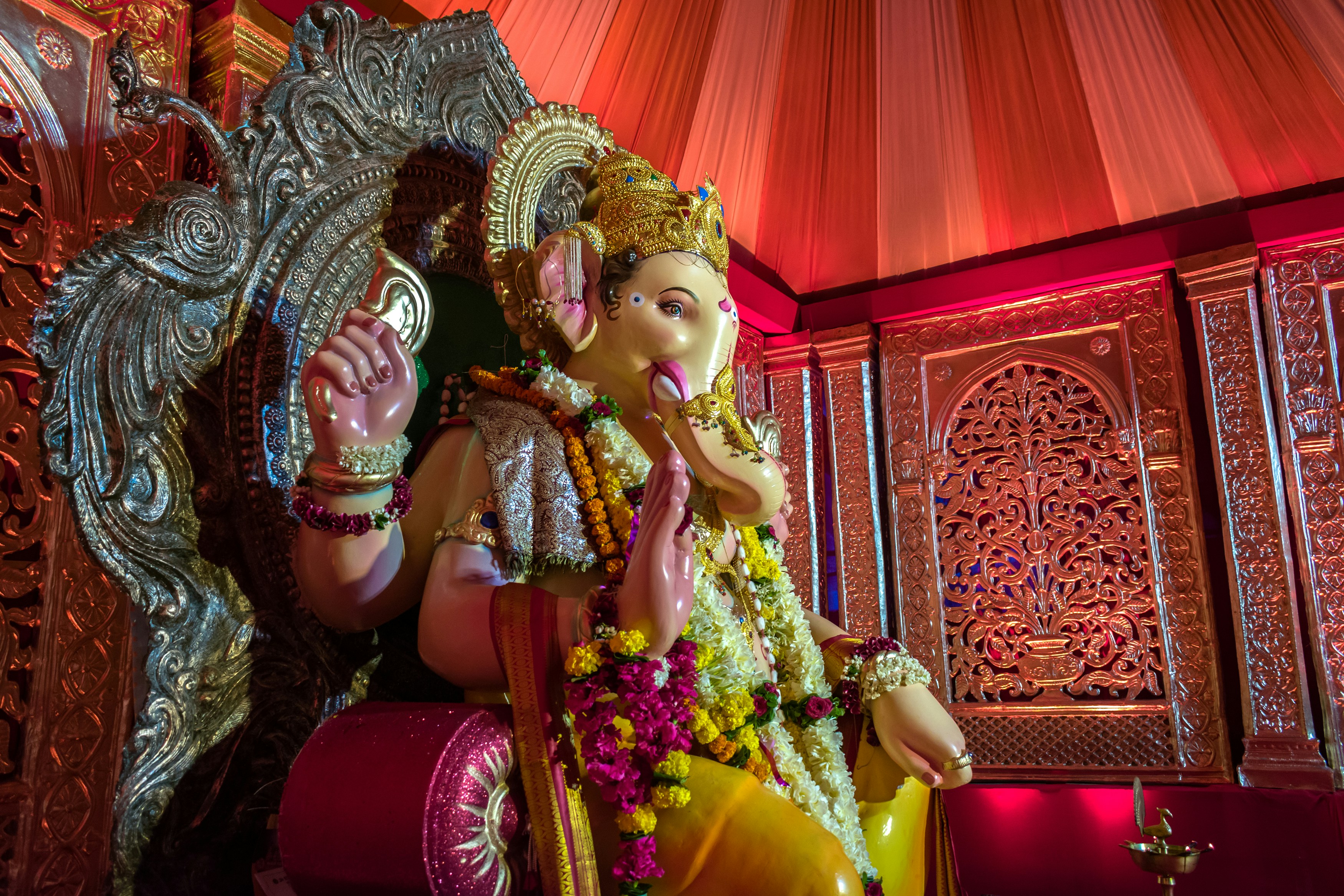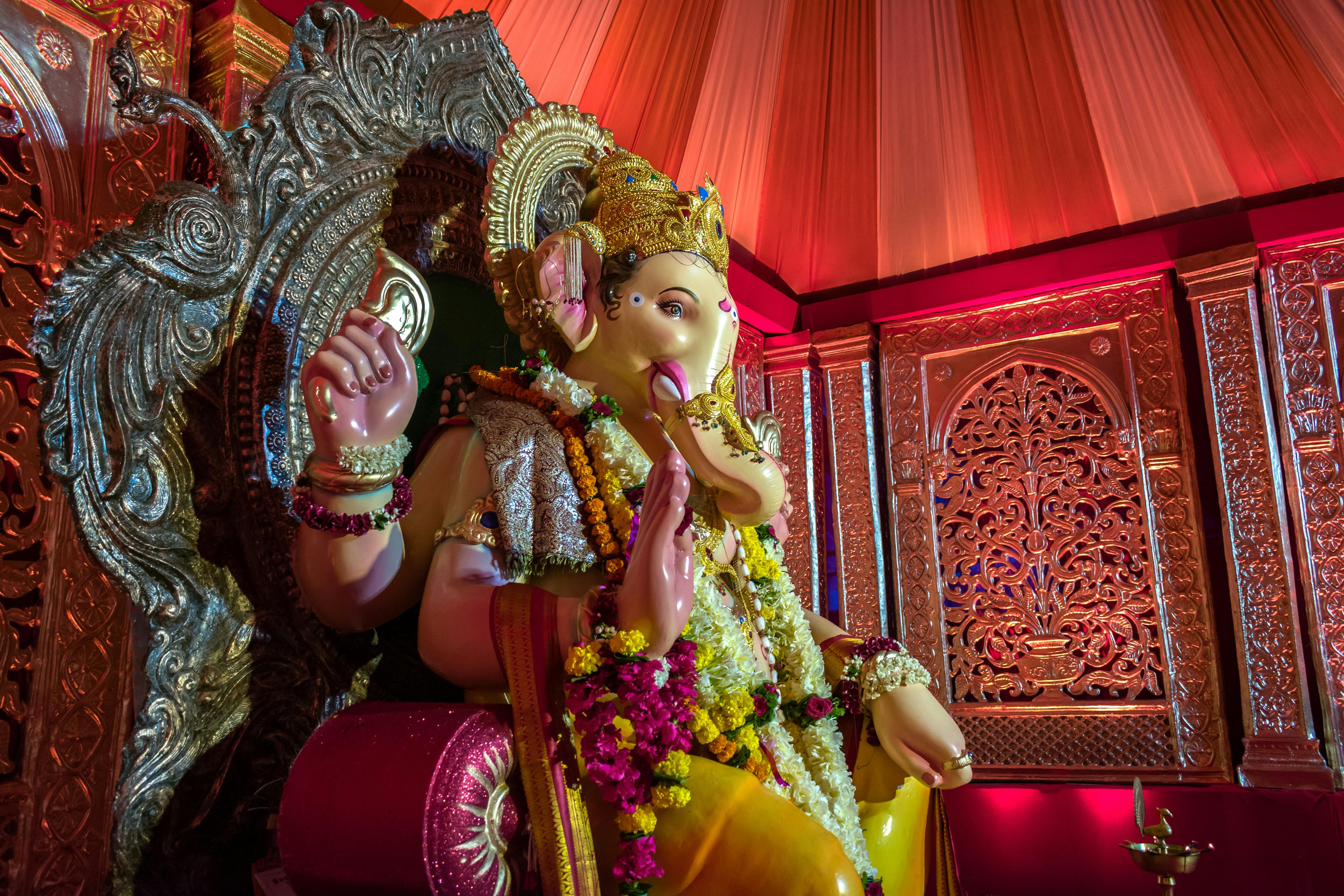The Kailasanathar Temple
The Kailasanathar Temple, located in the town of Kanchipuram, is a testament to the artistic and architectural prowess of the Chola dynasty. Built in the 8th century by the Pallava dynasty and later expanded by the Chola kings, this temple is a masterpiece of Dravidian architecture. Its intricate carvings, towering gopurams, and majestic vimanas make it a sight to behold.
Entrance and Carvings
As you approach the temple, you are immediately struck by its grandeur. The entrance is adorned with intricately carved sculptures depicting various mythological stories and scenes from Hindu epics. Each sculpture is a work of art in itself, showcasing the skill and talent of the artisans who created them.
Main Sanctum and Carvings
As you step inside the temple complex, you are greeted by a vast courtyard surrounded by pillared halls. The main sanctum, dedicated to Lord Shiva, is located at the center of the complex. The sanctum is adorned with exquisite carvings of gods, goddesses, and celestial beings. The lingam, the symbol of Lord Shiva, is the main deity worshipped here.
Vimanas and Gopurams
One of the most remarkable features of the Kailasanathar Temple is its vimanas, or tower-like structures that rise above the sanctum. These vimanas are adorned with intricate carvings of gods, goddesses, and mythical creatures. The vimanas are a testament to the architectural brilliance of the Chola dynasty, who were known for their mastery in temple construction.
Another highlight of the temple is its gopurams, or gateway towers. These towering structures are adorned with elaborate sculptures and carvings, depicting scenes from Hindu mythology. The gopurams not only serve as an entrance to the temple but also act as a visual treat for visitors, showcasing the artistic genius of the Chola dynasty.
Religious and Cultural Significance
Visiting the Kailasanathar Temple is not just a religious experience but also a journey through time. It offers a glimpse into the rich cultural heritage of Tamil Nadu and the architectural brilliance of the Chola dynasty. Whether you are a devotee or a history enthusiast, this temple is a must-visit destination that will leave you in awe of its beauty and grandeur.
Unique Architectural Style
The Kailasanathar Temple, located in the town of Kanchipuram, has a history that dates back to the 8th century. It was built by the Pallava dynasty and later expanded by the Chola dynasty. The temple is renowned for its intricate carvings and exquisite sculptures, which depict various mythological stories and deities.
One of the most fascinating aspects of the Kailasanathar Temple is its unique architectural style. Unlike other temples in Tamil Nadu, which are predominantly made of granite, this temple is made entirely of sandstone. The use of sandstone gives the temple a distinct appearance and adds to its charm.
Artistic Details and Sculptures
The temple’s architectural style is a testament to the skill and craftsmanship of the Pallava and Chola dynasties. The carvings on the walls and pillars of the temple are incredibly detailed, showcasing the mastery of the artisans who worked on them. The sculptures depict various gods and goddesses, as well as scenes from Hindu mythology, bringing the stories to life in stone.
Sanctum and Spiritual Atmosphere
As one explores the temple, they can’t help but marvel at the intricate details and the sheer grandeur of the structure. The outer walls are adorned with intricate carvings of gods, goddesses, and celestial beings, while the inner sanctum houses the main deity, Lord Shiva, in the form of Kailasanathar. The temple’s architecture is designed to represent Mount Kailash, the mythical abode of Lord Shiva, and every aspect of the temple is meticulously crafted to create a sacred and awe-inspiring atmosphere.
Religious Significance
Not only is the Kailasanathar Temple a testament to the architectural brilliance of the past, but it also holds immense religious and cultural significance. It is considered one of the holiest temples in South India and attracts devotees from all over the world. The temple is an important pilgrimage site for followers of Lord Shiva and is believed to bestow blessings and fulfill the wishes of its devotees.
Living Wonder and Devotion
Visiting the Kailasanathar Temple is like stepping back in time and immersing oneself in the rich history and spirituality of ancient India. The temple’s grandeur and beauty are a testament to the artistic and architectural achievements of the Pallava and Chola dynasties, leaving visitors in awe of the craftsmanship and devotion that went into its creation.
Exploration and Shrines
Continuing your exploration of the temple, you come across a series of smaller shrines dedicated to various deities. Each shrine is unique in its design and architecture, showcasing different styles and influences from different periods in history.
Water Tank and Tranquil Atmosphere
One of the most fascinating aspects of the temple is its water tank, or pushkarini, which is believed to have sacred properties. Devotees often take a dip in the tank before entering the main shrine, as it is believed to cleanse the body and purify the soul. The pushkarini is surrounded by lush greenery and beautiful flowers, creating a serene and tranquil atmosphere.
Attention to Detail and Artistry
As you wander through the temple complex, you can’t help but be amazed by the attention to detail in every aspect of the architecture. From the intricate carvings on the walls to the delicate sculptures adorning the pillars, every inch of the temple is a work of art.
Courtyard and Religious Ceremonies
Outside the main temple, you discover a sprawling courtyard where devotees gather for religious ceremonies and festivals. The courtyard is filled with the sounds of chanting and the fragrance of incense, creating an atmosphere of devotion and spirituality.
Awe-Inspiring Marvel
As you make your way back towards the entrance of the temple, you can’t help but feel a sense of awe and wonder at the architectural marvel that stands before you. The temple is not just a place of worship, but a living testament to the rich cultural heritage and artistic brilliance of the people who built it.
Peace and Tranquility
Leaving the temple complex, you carry with you a sense of peace and tranquility that can only be found in such a sacred place. The memories of the intricate carvings, the divine aura, and the spiritual experience will stay with you long after you have left.
Stories and Mythological Tales
As one steps into the Kailasanathar Temple, they are immediately transported back in time. The intricate carvings on the walls and pillars tell stories of ancient legends and mythological tales. Each sculpture is a masterpiece, meticulously crafted by skilled artisans who dedicated their lives to their craft.
Architectural Marvel and Devotion
The temple’s architecture is a marvel in itself. The main shrine, dedicated to Lord Shiva, is surrounded by smaller shrines dedicated to various deities. The towering gopuram (gateway tower) stands tall, adorned with intricate sculptures and vibrant paintings that depict scenes from Hindu mythology.
Spirituality and Atmosphere
But what truly makes the Kailasanathar Temple a living wonder is the devotion that permeates every corner of the temple. The atmosphere is charged with a sense of spirituality, as devotees bow their heads in prayer and offer their heartfelt supplications to the divine.
Rituals and Cultural Significance
Throughout the day, priests perform elaborate rituals and ceremonies, their chants resonating through the temple halls. The fragrance of incense fills the air, creating an ethereal ambiance that is both calming and uplifting.
Inclusivity and Cultural Heritage
It is not uncommon to see pilgrims from different walks of life coming together at the Kailasanathar Temple. People from all faiths and backgrounds visit this sacred place, united by their shared belief in the power of spirituality and the divine.
Promotion of Cultural Heritage
Aside from its religious significance, the Kailasanathar Temple also plays a vital role in preserving and promoting the cultural heritage of Tamil Nadu. The temple is a living testament to the artistic and architectural brilliance of the Chola dynasty, which ruled over this region centuries ago.
Through its festivals and cultural events, the temple brings the community together, fostering a sense of unity and pride in their shared heritage. It serves as a platform for artists, musicians, and performers to showcase their talents and keep ancient traditions alive.
Exploring Kanchipuram’s Cultural Heritage
Aside from its temples and silk sarees, Kanchipuram also has a rich cultural heritage that is worth exploring. The town is known for its classical music and dance performances, which are deeply rooted in the traditions of South India.
Dance Festival and Cultural Events
One of the most popular cultural events in Kanchipuram is the annual dance festival, held in the month of December. During this festival, renowned dancers from all over the country gather to showcase their talent and pay homage to the rich cultural history of the region. The performances take place in various temples and auditoriums, providing a unique opportunity for visitors to witness the beauty of Indian classical dance forms.
Carnatic Music Concerts
In addition to dance, Kanchipuram is also known for its Carnatic music concerts. Carnatic music, which is one of the oldest forms of classical music in India, has a strong presence in the town. Many renowned musicians have their roots in Kanchipuram, and music lovers can attend concerts and recitals throughout the year.
Historical and Archaeological Exploration
For those interested in history and archaeology, Kanchipuram offers a glimpse into its glorious past through its ancient ruins and monuments. The town was once the capital of the Pallava dynasty, and remnants of their architectural marvels can still be found scattered across the region.
Kanchi Kailasanathar Temple and Dravidian Architecture
One such example is the Kanchi Kailasanathar Temple, which dates back to the 8th century. This temple, built by the Pallava kings, is a UNESCO World Heritage Site and is considered a masterpiece of Dravidian architecture. Its intricately carved sculptures and majestic gopurams (towers) are a testament to the skill and craftsmanship of the ancient builders.
Exploring the Rich Heritage of Kanchipuram
Exploring the town of Kanchipuram is like stepping back in time, as every nook and corner is steeped in history and tradition. From its majestic temples to its vibrant cultural scene, Kanchipuram offers a unique and enriching experience for visitors.
Enter your email to get the Latest Updated Exploring News and Topics
Discover more from atozexplore.com
Subscribe to get the latest posts sent to your email.







